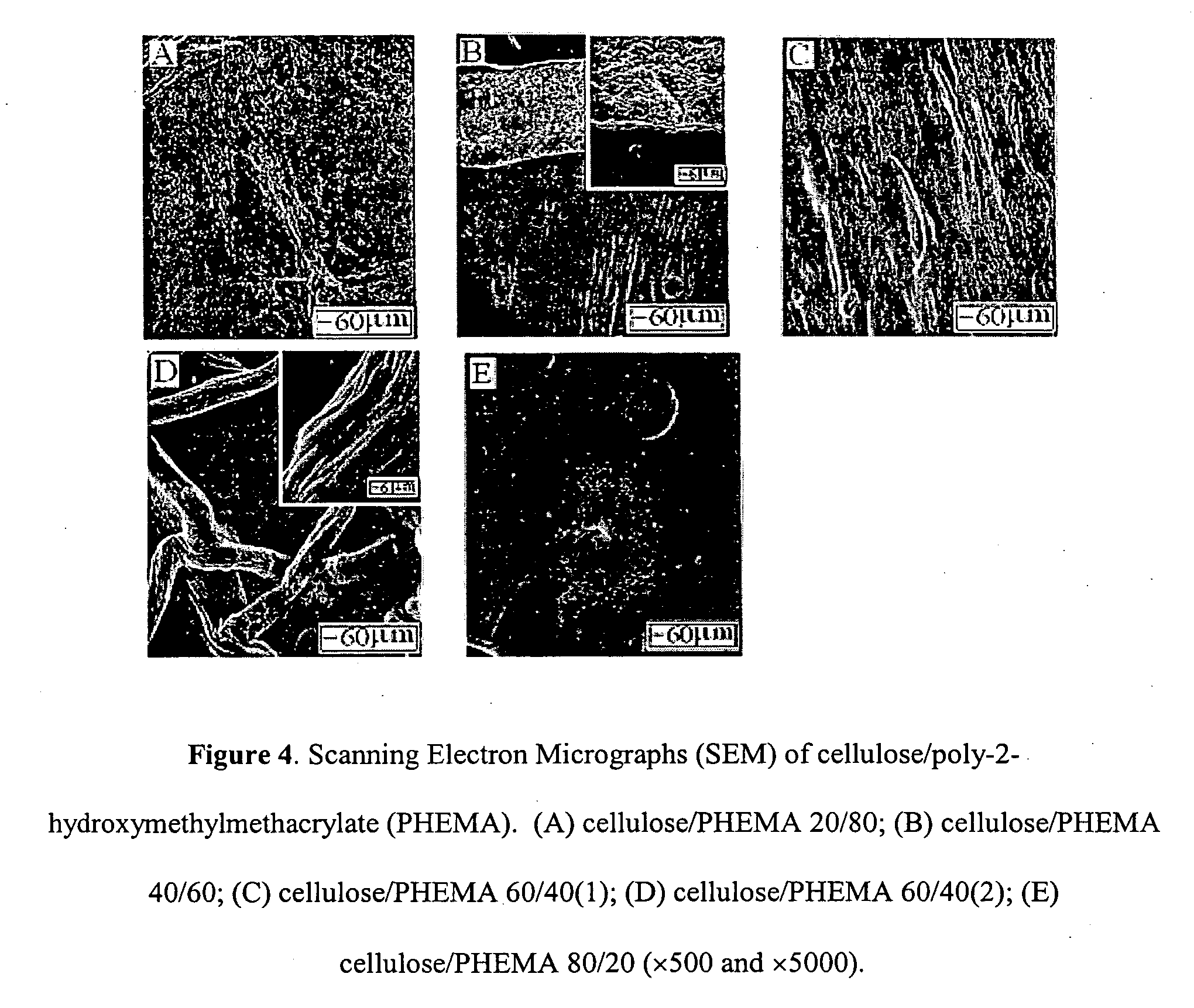Polymer dissolution and blend formation in ionic liquids
a technology of ionic liquid and polymer dissolution, which is applied in the direction of lignin material coating, starch coating, textiles and paper, etc., can solve the problems of a wide range of properties, and a novelty of little practical value, and the process of producing cellulose blends and other polymer blends with a wide range of possible polymer components has yet to be fully developed
- Summary
- Abstract
- Description
- Claims
- Application Information
AI Technical Summary
Benefits of technology
Problems solved by technology
Method used
Image
Examples
example 1
Polyacrylonitrile Sissolution in [C4mim]Cl and Reconstitution
[0063] Polyacrylonitrile (PAN) is typically processed in polar aprotic solvents such as dimethylformamide, dimethyl-sulfoxide (DMSO), and γ-butyrolactone, as well as a few molten salts such as M+SCN− (M: Li, Na, K). Due to the fact that PAN and cellulose are readily dissolved by the aforementioned solvents, blends of cellulose / PAN are well studied and characterized.
[0064] Up to 10 wt % of PAN has been successfully dissolved in the ionic liquid [C4mim]Cl at room temperature. The solutions of PAN / IL can be reconstituted in a similar fashion to cellulose-in-IL reconstitution. Using water as a coagulating solvent, flocks, fibers, films and molded forms can be generated, depending on the method of regeneration. For example, pouring IL / PAN solutions in the rapidly stirring water will result in a powdery floc, whereas extruding solutions through a syringe into water allows for the formation of fibers / rods. Finally films can be ...
example 2
Cellulose / Polyacrylonitrile (PAN) blend in [C4 mim]Cl
[0066] A 5% cellulose (DP=1056) and a 2% PAN (Mw=86,000) solution were each prepared in [C4mim]Cl. Dissolution was achieved with mixing at 104° C. over 48 h time period. The two solutions were then mixed at 104° C. in varying proportions; yielding relative composition ranges of the two polymers from 20 / 80 to 80 / 20, as a ratio of weight percent of cellulose to PAN. Next the blended solutions were allowed to cool, and then coagulated as membranes using water. The films were then placed in a water bath and allowed to soak for 24 h, in order to allow the maximum amount of IL to diffuse from the blended composite. Finally the composites were washed several times with water. The resulting soft, flexible cellulose / PAN membranes were dried in the oven for 24 h. The resulting films were then analyzed using SEM and DSC. FIG. 3 shows a series of SEM pictures for cellulose / PAN blends. On examination of the photographs, it appears that the su...
example 3
Cellulose / PHEMA blend in [C4 mim]Cl
[0067] Blends of cellulose and PHEMA were prepared as above, and displayed similar characteristics to the blends of cellulose / PAN. The cellulose / PHEMA blends formed using [C4mim]Cl appear to form miscible blends from SEM in FIG. 4.
PUM
| Property | Measurement | Unit |
|---|---|---|
| Temperature | aaaaa | aaaaa |
| Temperature | aaaaa | aaaaa |
| Rheological properties | aaaaa | aaaaa |
Abstract
Description
Claims
Application Information
 Login to View More
Login to View More - R&D
- Intellectual Property
- Life Sciences
- Materials
- Tech Scout
- Unparalleled Data Quality
- Higher Quality Content
- 60% Fewer Hallucinations
Browse by: Latest US Patents, China's latest patents, Technical Efficacy Thesaurus, Application Domain, Technology Topic, Popular Technical Reports.
© 2025 PatSnap. All rights reserved.Legal|Privacy policy|Modern Slavery Act Transparency Statement|Sitemap|About US| Contact US: help@patsnap.com



